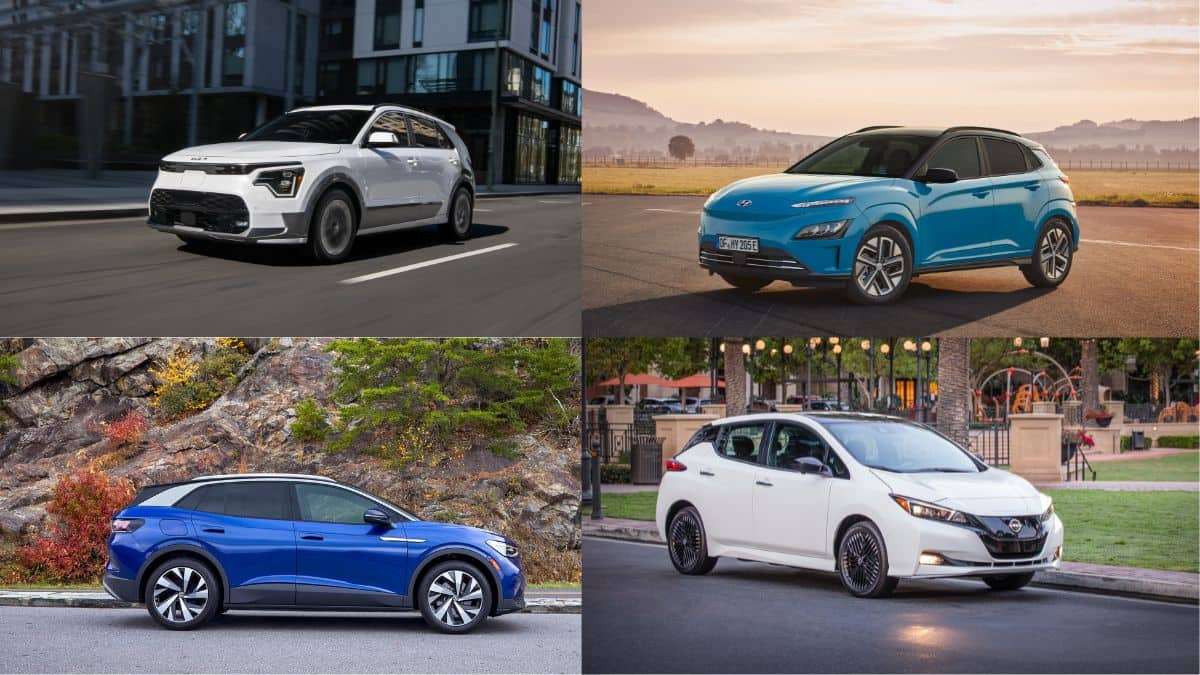Since I already compared the Niro EV to its lowest cost competitor previously, now I would like to hold the Niro up to the EVs that are competing closer to its price point. The question is: do the more expensive entry level EVs offer more standard features than the Niro, or does the Niro offer more standard kit? The EV closest to the Niro in price is the Volkswagen ID.4.
The new for 2023 ID.4 Standard model is supposed to have a starting MSRP of $38,995 before destination or other fees, which would push it over $40k too, assuming you can find one. I’ll get straight to the point: the Niro EV has more standard safety features than the ID.4, though the ID.4 does have more standard safety features than the Chevy Bolt in its its highest trim. The safety features the base Niro has but the base ID.4 lacks is not a small list. VW’s EV lacks certain sensors and warning capabilities for turning, backing up, opening your doors in oncoming traffic, notification for lead vehicle departure, hill start assist and downhill brake controls as well as a heated windshield (which is on the more expensive ID.4 trims) and power driver’s seat.
To be perfectly fair, there are also standard features the base ID.4 has that the Niro lacks, like front parking sensors (the Niro only has rear ones), an auto dimming rear view mirror, in-car wifi, and an electronic limited-slip differential. Although the Niro EV also has a power rear hatch, 4 wheel disk brakes, and a better warranty for both bumper to bumper and powertrain. Overall, the Niro EV gives you more features than the ID.4, at the same or better price, and it may come down to whether the Niro, or the ID.4 has the specific features you want (though it is more likely that the Niro will have them than the other way round).
What about the other two entry level EV’s, that are currently on sale, the Nissan LEAF and the Hyundai Kona? The LEAF comes pretty close to matching the Niro EV’s safety and convenience features, though it lacks “smart” cruise control, downhill brake control, hill start assist and other sensor based warnings and driver assistance features.
Perhaps even more importantly though, the base Nissan LEAF, while its MSRP starts at only $28,060 (before $1,095 delivery fee) that is for the 40 kWh S version of the car, which only has 149 miles of range on a full charge. One has to pay $36,040 (not including delivery fee) for the LEAF SV Plus model to get a more competitive 212 miles of range.
However, in doing so you would get additional safety and convenience features in the more expensive LEAF like smart cruise control (in the ProPILOT Assist package), around view monitor that allows a driver to see a simulated 360 degree view outside the car (something the Niro lacks), and some other features the Niro has as well. For the Kona, most of the features are the same as in the Niro EV, though the cheaper Hyundai does lose some of them (which is understandable given the lower cost and the components they share as products from “sister” companies). The features missing in the base Kona ($33,550 MSRP, excluding delivery and other fees), include parking distance warnings, forward collision assist with cyclist detection, highway driving assist (an automated steering feature), automated high beams, and smart cruise control, though all of these features are available on higher level Kona trims. The Kona EV is also smaller than the Niro EV, and has less passenger and cargo volume.
It is also worth noting that if you want to get all the same safety features in the Kona that the Niro has, the Kona will actually end up being more expensive than the Base Niro by a thousand dollars or so because only the top trim level of the Kona has all the same features as the base Niro EV.
And there you have it dedicated readers, if safety and certain other features, warranty, level 2 charging speed, availability, and one of the largest interior volumes of any entry level EV are more important to you, you get what you pay for in the Kia Niro EV. It is certainly not the lowest priced entry level EV in base model form, but it has more standard features than any other EV that it competes with. Does that increase your interest in the Niro EV? Are you more likely to consider it than the other entry level EVs after reading this article or others I’ve written on the Niro EV? Please leave any comments or questions below.
Images courtesy of Kia, Hyundai, VW, and Nissan.
Justin Hart has owned and driven electric vehicles for over 15 years, including a first generation Nissan LEAF, second generation Chevy Volt, Tesla Model 3, an electric bicycle and most recently a Kia Sorento PHEV. He is also an avid SUP rider, poet, photographer and wine lover. He enjoys taking long EV and PHEV road trips to beautiful and serene places with the people he loves. Follow Justin on Twitter for daily KIA EV news coverage.






Comments
Assuming your focus is on…
Permalink
Assuming your focus is on the US market, I suggest you use base MSRP + Delivery - Federal Rebate. That is a much more useful number to a buyer than MSRP. For example,
the Tesla Model 3 standard range is now $37,940 + $1,390 - $7,500 = $31,830.